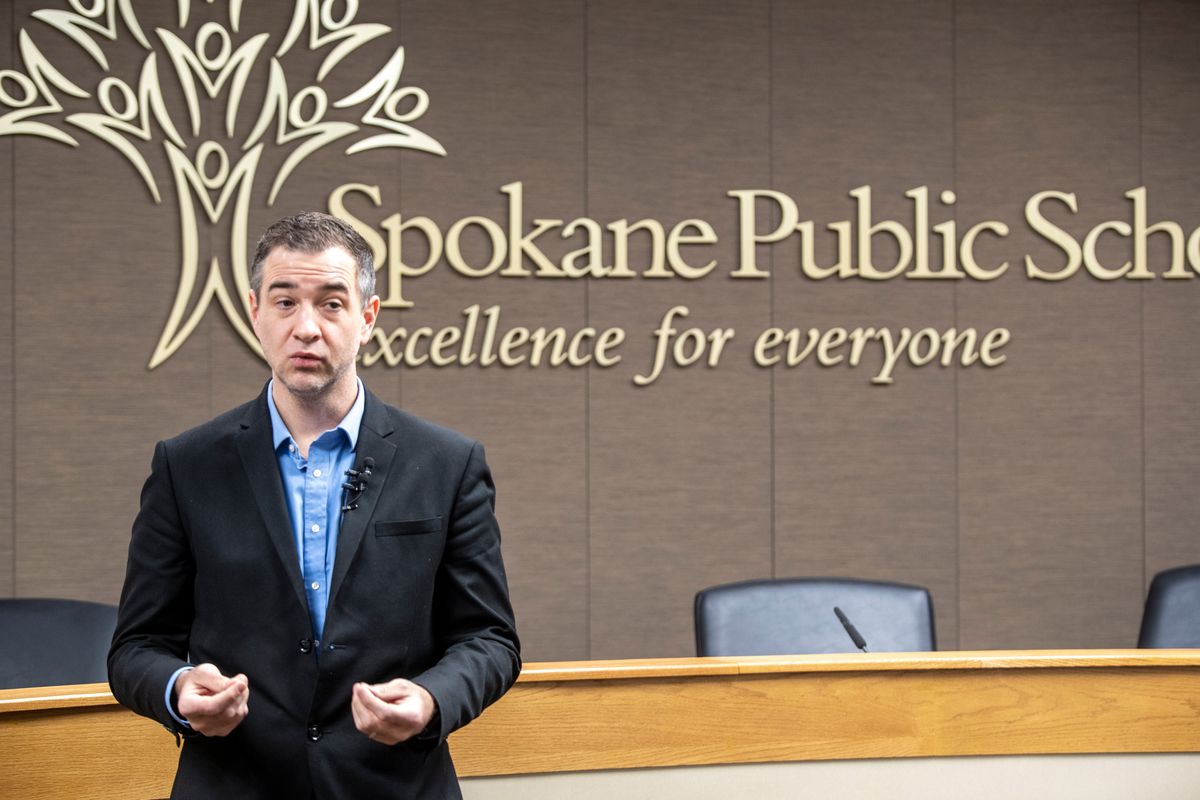School district publicly reviews ‘lessons learned’ in response to school shooting hoax

When police officers swarmed into Lewis and Clark High School’s cafeteria last month with their guns drawn, Principal Ivan Corley had no idea why they were there.
Less than two minutes earlier, a 911 caller had told dispatch there was an active shooter at the school, describing the circumstances in detail. The call appeared to come from the school, so dispatchers didn’t call the high school.
As officers streamed into the school, some telling students to leave, the result was a mass exodus from the common areas. Some students headed to their designated evacuation spot, where typically a staff member would meet them. The school was then put into lockdown. But even then, some parents at a Monday night meeting said their children couldn’t hear that announcement.
When officers didn’t immediately find a threat, they began clearing the school room by room, with more police pouring in from the surrounding area.
About eight minutes after the 911 call came in, there were about 70 officers from a variety of regional and federal agencies at the school, said Lt. Rich Meyer, the incident commander.
The call was a hoax, one that was repeated at about the same time at schools across the region. No one has been arrested for making the call, which is a federal crime.
The incident was confusing for families and students, too, they said during a Monday night meeting with school district officials, police and other first responders.
“There are a number of things that went really well that day,” Superintendent Adam Swinyard said at a Tuesday morning press conference. “There’s also been opportunities for learning when a response of that scale and that authenticity occurs. There’s numerous things that can surface to really help us strengthen our response.”
The district has several areas they hope to improve upon, Swinyard said.
They want to strengthen coordination between police dispatch and the school’s main office, giving more notice that officers will be arriving, Swinyard said. Dispatchers will now call the school, no matter where the call appears to have originated.
This could help the school go into lockdown more quickly, Jeremy Ochse, executive director of schools at SPS in the southwest region, said Monday.
Corley said Lewis and Clark plans to test a wail sound that may better cut through noise to alert students to a lockdown ahead of an announcement from Corley himself.
The district also plans to train students again on what to do if they leave the building during a lockdown. Staff from the district office will also go to the evacuation locations in the event of a lockdown, Oche said.
The district plans to improve coordination with law enforcement to help them better sweep the building, in part by providing keys. Students will not be asked to open classroom doors. Instead, police will open them as they clear rooms or an announcement will be made on the overhead speaker signaling the end of lockdown.
Lastly, the district plans to give teachers standardized scripts to read to students on lockdowns to make sure information is conveyed quickly and uniformly, Swinyard said.
“We recognize that we can unintentionally create significant trauma if we’re not really thoughtful about the way in which we’re educating them,” Swinyard said.
It could take weeks or up to a few months to complete new safety checks and implement these changes, Swinyard said.
“Fortunately, this was a hoax,” Swinyard said. “But our intent is to continue to really evaluate closely with our partners in law enforcement what are those lessons learned that we can take away and strengthen our system.”